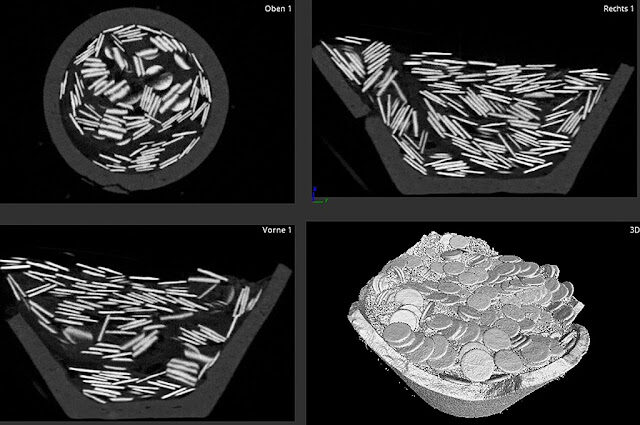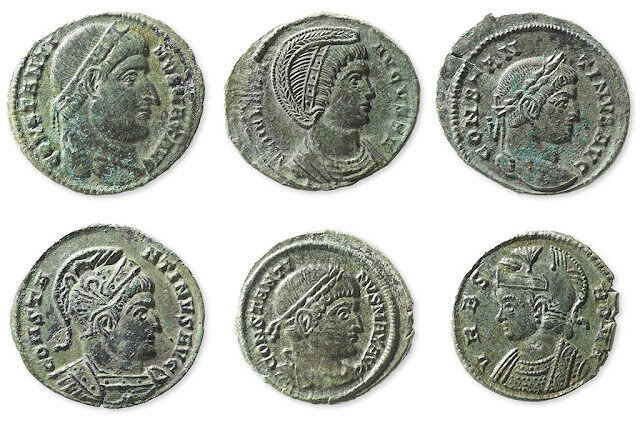
© Archaeology BasellandThe ceramic pot with the coins after professional uncovering by employees of Archäologie Baselland
In September 2021, volunteer Daniel Ludin was prospecting in a wooded area not far from Wildenstein Castle with his metal detector. A strong signal from the device prompted him to dig. After he had recovered several Roman coins and ceramic fragments, the full extent of his discovery became apparent: a treasure of coins buried in a pot came to light.
Daniel Ludin acted with extreme deliberation. He covered up the find and informed Archaeology Baselland. Thanks to this professional approach, an excavation team from Archaologie Baselland was able to recover the pot - professionally fixed - in a block.
The advantage of recovering finds of this kind in a block is that the coins can be documented and uncovered under laboratory conditions. In this case, the composition of the find was also examined in advance by means of a computer tomography at the Swiss Federal Laboratories for Materials Testing and Research (EMPA) in Dubendorf.

© Archaeology BasellandIt was already clear from the computer tomography that the coins had been placed in two portions in the pot. The thick black line in between proved to be a piece of leather when the coins were uncovered
The EMPA has sufficiently powerful X-ray equipment that it was able to penetrate the contents in millimetre layers. These images already showed a free zone between two coin portions. The subsequent uncovering in the laboratory revealed this to be a simple piece of cowhide, which separated the coins into two parts. We can only speculate about the purpose of this division. Were there two different owners at work here? The only thing that can be said for sure at the moment is that the coins were gathered together in a short time and the pot was filled all at once.
The coins are made of a copper alloy with a very low silver content. Accordingly, they are a large quantity of small change with modest purchasing power. The value of all the coins is probably equivalent to about one gold solidus weighing 4.5 g, which is equivalent to about two months' pay for a soldier of the time. All of the 1,290 coins were minted during the reign of Emperor Constantine the Great (306-337 AD). The most recent specimens date from the years 332-335 A.D.

© Rahel C. Ackermann Inventory of Found Coins in SwitzerlandThe coins were all minted during the reign of Constantine the Great (306-337 AD). They show portraits of the emperor and his relatives on the obverse
The late Roman period (3rd and 4th century) is characterised by numerous "treasure trove horizons": In troubled times - triggered by civil wars, invasions by neighbouring ethnic groups or economic crises - many people buried their valuables in the ground to protect them from foreign access. For the period in which the pot from Bubendorf was buried, however, there are hardly any comparable hoards in the entire Roman Empire. These years are characterised more by their political stability and a certain economic recovery.
On the one hand, this makes the find very special, but on the other hand, it poses further riddles. For what reasons were the coins buried and why were they not dug up again? Apart from personal motives that can no longer be traced, the place where the coins were found could provide clues for an explanation: It is located in the border area between three Roman estates. Who knows, perhaps the coins were kept here in a kind of border sanctuary or sacrificed to the gods.






dying of things like starvation, rival neighbors or smallpox now would they... Or maybe a comet or fragments of one perhaps...